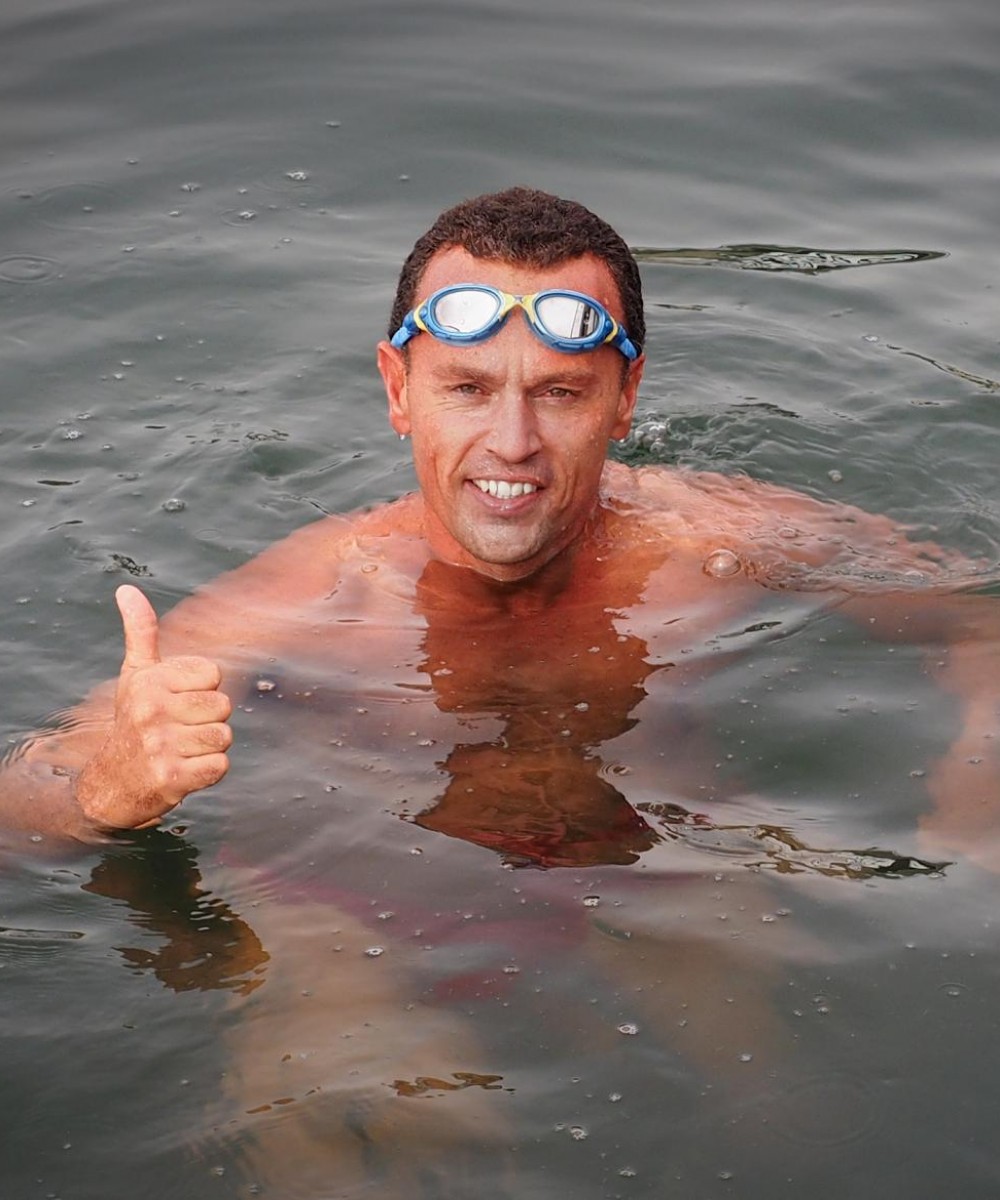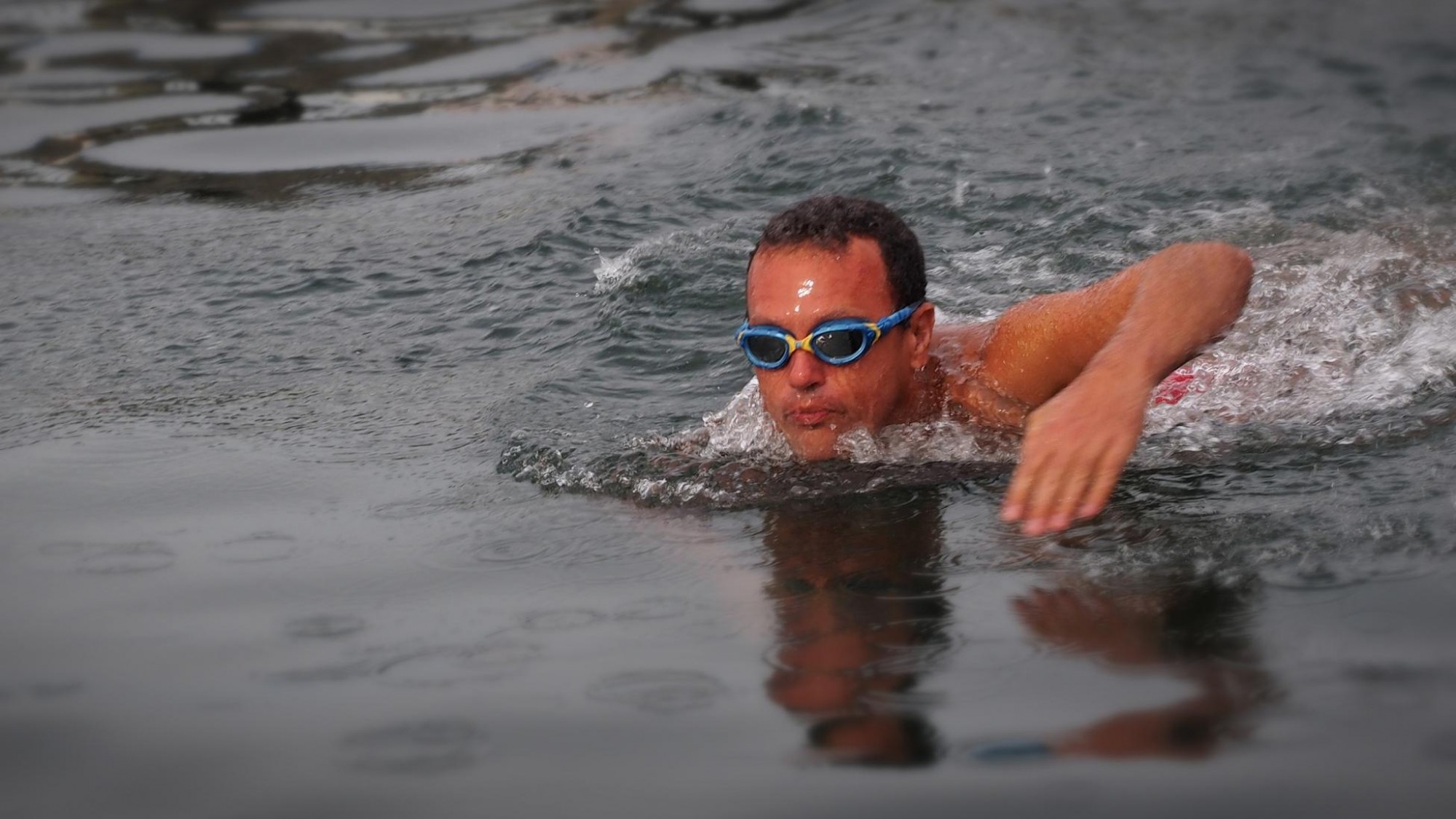In this article, we’ll look at how to deal mentally and physically with swimming in sloppy conditions. I feel I've good a good handle on this, being an ex marathon swimmer (who has had to deal with extreme waves in many of my swims).
The first thing we need to get straight is attitude. Everybody gets thrown around and feels unco-ordinated in rough conditions, so don’t think it’s just you. Be positive and aggressive to the task at hand. Let’s look at some different scenarios...
CHOP HITTING YOU FRONT ON
Let me clear up my definition of chop. Chop is 'washing machine' conditions, not breaking waves at a surf beach. With chop, no matter who you are, facing it head on slows us down. What we have to work on is reducing the damage it does to our forward progress. This is achieved by bashing your arms higher and in a more round armed fashion .You want most of the chop to hit your bicep area instead of your hand/forearm region . If you try to do a high elbow/low hand recovery the chop will hit this area more often than not, meaning more of your arm will have to go through the chop instead of over it. I know it sounds silly to change the stroke you’ve worked on in the pool for years, but think of it like climbing a hill on your bike. You either slide back on the seat to use different muscles or you get out of your seat and use different muscles. Running up a hill, you also change your technique, chop is merely the 'hills' of swimming.
CHOP HITTING YOU ON THE RIGHT
In this situation, keep your right arm recovery strong and forceful when you feel the water hitting it. You may also need to lean into the wave slightly with your right torso to balance your body. Keep your left arm relaxed, just like you would in the pool.
CHOP HITTING YOU ON THE LEFT
Just reverse everything. Batten down the hatches on the left side of your body, and relax the right side as much as possible.
CHOP JUST HITTING YOU FROM ALL DIRECTIONS
The best visual analogy of these circumstances I can make is this... You’re on a boat with Gilligan, ("the skipper too") and the boat falls apart in a storm. You find a piece of wooden debris from the boat, jump on it and, through the sideways rain, you see an island only a matter of 500 metres away (or however far your adverse tri swim is). Do you:
(a) Try to swim a pretty-looking stroke.
or
(b) Batten down the hatches, become really close to your debris (Wilson) and just bulldoze your way to the island as quick as possible.
Correct answer upside down on page 29 (now back to reality...)
CHOP HITTING YOU FROM BEHIND
Here we must try to milk it for what it’s worth by surging when you feel it pushing you. Surging is achieved by either bringing your kick into play / increasing your stroke rate / or both. How fast you surge will determine how far you get pushed. Unfortunately, it's usually only a matter of seconds (unless it's MASSIVE.) After you’ve milked the push, you’ll find a flat spot for a few seconds (where you feel like you’re swimming with a handbreak on.) At this stage, relax just a little and wait to surge on to the next chop. It will only be a matter of seconds, so enjoy your semi rest.
IN CLOSING
Chop slows a swimmer's forward progress, even the ones who think they are the best. I remember my sister, Tammy, trying to do a swim around Port Phillip Bay in '95, a distance of over 100 km. I was on the support boat watching her (in-between fishing) and, after 21 hours in the water, she hit the mud flats near Portsea. This is a shallow part of the bay that you don’t want to hit going into a strong headwind, but we did. She had only five kilometres to go (which we’d told her via white board marker), it was very early in the morning, and she was VERY cold and fatigued (as you could imagine after 21 hours of solid swimming). She basically just wanted to get the damn swim over at this stage and was literally sprinting. Thirty or so minutes later, at her food stop, she was being a baby and cried out, "how far to go now?" "Five Kilometres," we, unfortunately, had to tell her, (you can’t lie to a marathon swimmer, as they store it all down and you’ll lose their trust later). We convinced her to keep going but, after an hour of very solid swimming, we hadn’t moved more than 100 metres and were getting concerned about her wellbeing, so pulled the pin on the swim. Tammy was most annoyed and went back 30 or so hours later to finish the last part that she couldn’t do that previous morning. It took around an hour to complete.
The moral of my story is that we all only swim slightly faster or slower than walking pace and thus are all vulnerable to the elements. Triathlon swims are never as bad as race organisers are biased against hard swims due to liability considerations, so don’t put yourself down and swim accordingly if conditions aren't 'perfect', attack! and swim up to your potential.





